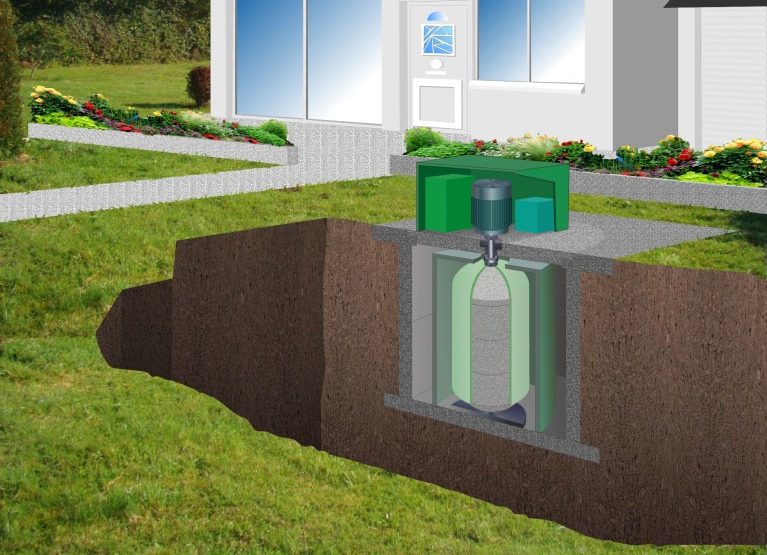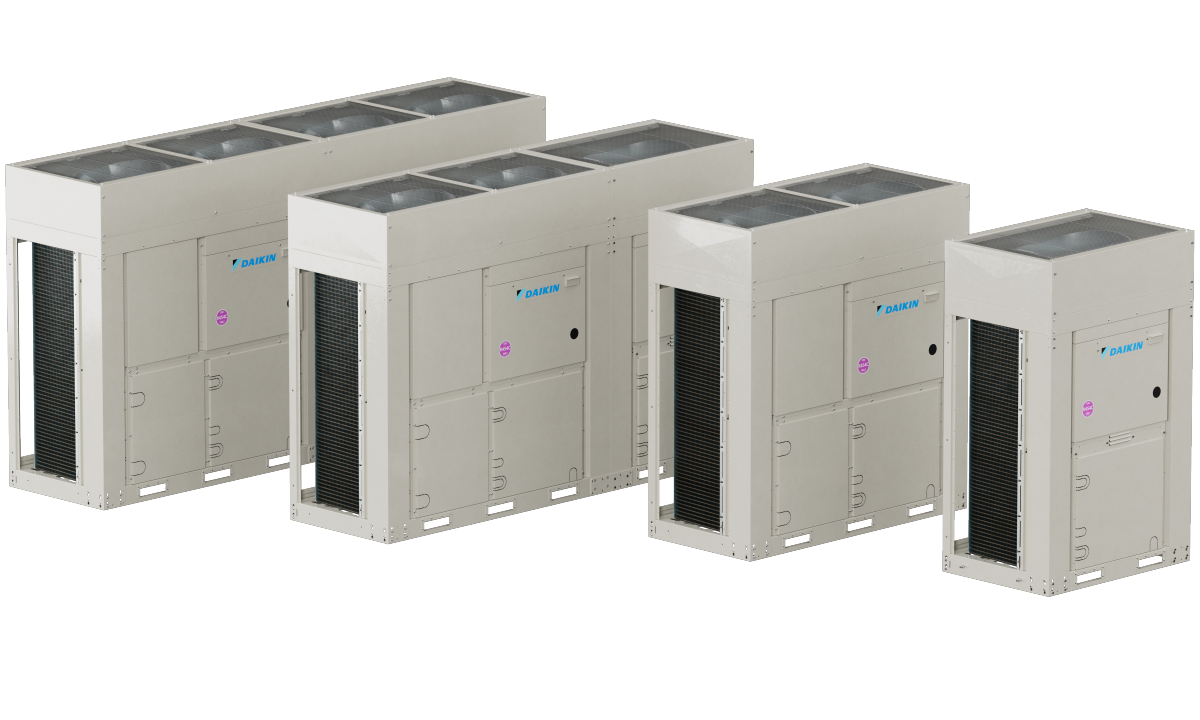From pv magazine France
France-based start-up Energiestro has developed a storage technology for residential PV based on a flywheel system based on concrete.
A flywheel system is able to store electricity by converting it into kinetic energy using a motor to spin a rotor. The flywheel rotates at such a high speed that the electrical power is transformed into mechanical power.
The proposed solution consists of a hollow or solid cylinder that is rotated around an axis and connected to an electric motor and generator. “When you have the energy to store, the engine drives the flywheel, which accelerates,” said the company's co-founder and general director, André Gennesseaux. “In the other direction, the motor can act as a brake to discharge the electricity.”
To date, according to the manufacturer, most of the flywheels used for this kind of storage were made of steel. “But steel flywheels have a limit: their price, while stationary storage users are looking, above all, for the best costs,” Gennesseaux explained. “Some companies are also developing carbon cylinders, which are much lighter but, again, very expensive while our approach is not to work primarily on the weight because in this type of applications, it does not matter.”
According to the general director, carbon flywheels currently cost around €250/kWh, steel flywheels €200/kWh and concrete ones around a few euros. “The particularity of our patented technology is that the concrete cylinder is pre-stressed by a winding of fiberglass and is held in a vacuum to avoid friction,” Gennesseaux stated. Thanks to this, maintenance operations are reduced because the mechanical part is sealed and the lubricating oil is also in a vacuum environment, without risk of oxidation.
The flywheel is guaranteed for 30 years and a change of its inverter is expected after 15 years. “At the beginning, we chose concrete for price reasons, but we quickly found that its life cycle analysis was also positive,” Gennesseaux went on to say. “We are around 10 grams of CO2 per kWh, while lithium-ion batteries are around 40g CO2/kWh, at the same level as steel flywheels.”
Currently, Energiestro offers a standard storage solution with a nominal power of around 10 kW, which corresponds to a charge and discharge cycle in one hour.
The flywheel has a diameter of one metre and weighs three tonnes, and can be placed in the garden of a private house.
The system capacity should be increased, initially, to 20 kWh, and then 50 kWh, to eventually reach 24 hours of storage. “The size limit will be given by logistics as we have to find cranes capable of burying the flywheels in the ground, which is why we are limiting ourselves to 50 kWh in our current business plan,” Gennesseaux added, noting that the solution will be initially offered in France's overseas territories and Africa.
The French company received funding from the European Union's Horizon 2020 research and innovation program. “As a beta-test, we have a demonstration project with Voltalia in Guyana,” Gennesseaux said. “In this context, we will install a 10 kWh flywheel which will manage fluctuations on the network for one hour if a cloud passes.”
According to him, in hot and humid regions, the flywheels are much more robust and reliable than lithium-ion batteries. The company is also working in partnership with Engie on the Thémis solar power plant project in the Pyrénées-Orientales (3.4 MWp) where several 10 kWh flywheels will be installed with the objective of verifying the effect of this technology in frequency regulation, compared to lithium-ion batteries.
*The article was updated to amend a translation error. The proposed solution consists of a hollow or solid cylinder and not a hollow, solid cylinder as we previously reported.
This content is protected by copyright and may not be reused. If you want to cooperate with us and would like to reuse some of our content, please contact: editors@pv-magazine.com.




If the basic unit’s flywheel (not steering wheel) has a mass of 3 tons, then that would indeed correspond to a concrete volume of about one cubic metre. Reinforcing the concrete with one or more windings of fibreglass would not change this much
And it corresponds to an average (rms) concrete velocity of 160m/s, or close to 600km/h.
A concrete element on the edge will experience at least 5000g.
The trick will be making sure the concrete is crack free.
Normally, you would go for materials with good tensile strength: hence carbon fibres. But for lower cost, surely fibregass would be better than concrete?
And if it fails – well, I suppose it has to be buried in the garden, with metres of soil and rock to absorb the blast.
This seems a Cost Effective PV Energy Storage System
This is one of those technologies that never quite catches on, but never quite goes away.
One issue with the material in one these is “creep”. The flywheel will slowly destroy itself over time. That is pretty much a given. Some sort of containment system will be needed for a steel or concrete flywheel. A carbon fiber wheel simply turns into a large pot scrubber upon its failure. Worth its cost because of this built in safety factor.
The whole concept seems a bit off. Considering the friction caused way the weight, the stresses caused by the weight, the safety issues caused by the weight in motion and the cost issues caused by dealing with the weight. On the other hand you can go the direct opposite and go with light weight and high speed. You then have to deal with the problem on the other extreme. Storage in motion just doesn’t make sense.
Just use CAES with CA Heat Recovery…. low cost, long life and perfect for 10-100 MWhr Energy Storage… at < $100/KWhr… too…
With an efficiency of 40% to 60%, CAES (and liquid air storage) are good competitors to hydrogen for long term energy storage.
Flywheels are far more efficient over the short term and therefore compete with batteries.
Turbostratic graphene additive as an add mix to concrete would decrease weight and improve tensile strength.
I like the lattice honeycomb structure of turbostratic graphene as a concrete admixture. It reminds me of an old article in Omni magazine where they were using dried cow’s blood as an admixture. The blood created a uniform honeycomb bubble effect in the concrete. It still kind of grosses me out though.
I would think that they would want the flywheel to be heavy, as they would be able to store energy at a slower RPM.
Hopefully the vacuum seal can hold up to high speed, the balance would have to be perfect to not quickly wear out the bearings and seal.
Even fossil burning power houses could use a bank of these to smooth out their peak demand curve.
I like that there’s no toxic mess at end of life, or in the event of a failure.
If you have discounted electric power at night…you would not need the solar panels. Just store up during the discounted electrical hours.
3 tons is roughly the size of a train regenerative breaking system. Those store around 9 kWh running at 8000 rpm. Given their material is worse they are going to have to run slower (and energy drops by ^2), so no chance of 50 kWh. This article didn’t ask how long this thing can store the energy. Flywheels are used for very short term stuff. Vacuum magic aside most domestic homes don’t need 50 kWh of surge power storage or supply…
The article says that both the charging and discharging cycle is an hour.
FurBee, you misunderstand the question. 1hr to discharge 10kWh from a 10kWh flywheel is simply a definition of “10kWh”. A 10kWh battery can provide 10kW for one hour (or 20kW for 30 minutes).
The question Ben asked is really: “Once this is spun up to max speed, what are the frictional losses?” Basically, how much energy is needed to keep this full. Or more in the way Benjamin worded it, how long can it STORE charge without additional input?
I’m interested in using this in combination with others. Its not a zero sum game and that has been one of the biggest hurdles in renewable and energy storage systems. The greatest breakthroughs are just combining them into a collaborative system.
“The flywheel rotates at such a high speed that the electrical power is transformed into mechanical power.”
Is low speed not mechanical power?
“The proposed solution consists of a hollow, solid cylinder that is rotated around an axis and…”
What is a “hollow, solid cylinder”?
An hour’s worth of storage, when most PV home systems need close to 20 hours of storage.
No, most homes don’t need 50kw of surge power, but most homes are located where they get most of their solar power when no one is there to use it. That time-shifts when the power is available.
This statement is confusing: “The proposed solution consists of a hollow, solid cylinder “.
It can’t be both hollow and solid
Thanks for your comment Bob, the article was amended.
I know that solar energy is definitely the way to go using storage cells. What do these speeding concrete cylinders have to do with energy storing? Is this for commercial storage or the private sector?
I don’t get it. What is a ” hollow solid cylinder?” Isn’t that an oxymoron?
How about using steel encased concrete for the flywheel
Back in the 70’s Popular Science or Mechanics mag had an article about an experimental car that had a flywheel and a small engine. The flywheel was fiberglass and was mounted in a vacuum housing (to eliminate air resistance).
What about the gyrational forces – vertical orientation very important as the Earth spins daily 1 revolution
kevin, if they are girational forces , explain how a plane that travels at half or above the “rotational” speed of the earth does not counter with travelling times in one direction verses the other?
Let’s stick with known science… lol if “earth girational force” is an issue maybe you should concern yourself with muons disrupting the angular momentum lmao
Earth rotating is an actual issue for flywheels since it creates torque perpendicular to the axis of rotation (if you’ve ever seen the experiment where a heavy flywheel becomes easy to hold up with one arm after spinning it up – its the same effect).
On a mechanical bearing flywheel – this is actually responsible for most of the friction it experiences over a day. This effect is eliminated by either gyroscopically jiggling the flywheel around over the course of the day or by using magnetic bearings, however, both are very expensive compared to this product.
What about noise? I struggle to believe that when I’m trying to get to sleep on a quiet night, I won’t be able to hear or feel 3 tons of concrete doing 10,000 rpm under my lawn.
They are supposed to rotate in vacuum, and with ~no friction. You won’t be able to hear that unless it breaks down, in case you will feel an earthquake.
But I wonder how much dynamical friction there will be due to gravity. I guess this force is causing the moon to hide a back side from us.
If cycles had heavy rimmed tyres would it be possible to peddle like mad on the flat and then use the stored rotational energy to climb hills. Fill your cycle tyres with water and see if it helps. It would mean evening out the power of using the feet.
When I stir my tea I am always surprised how long the liquid rotates. If I had a cup twice as big I would guess that the rotation duration would become more than twice as long.
If this idea were done with a man made lake could we not ignore resistance due to the fact that it is an area factor while energy stored is a volume factor. So.. the bigger it is maybe the more efficient it is and the longer its energy storing duration. Oh ….. and to stir the lake rivers could be made to flow in at a tangent and exit at the centre of the lake via a swallow hole.